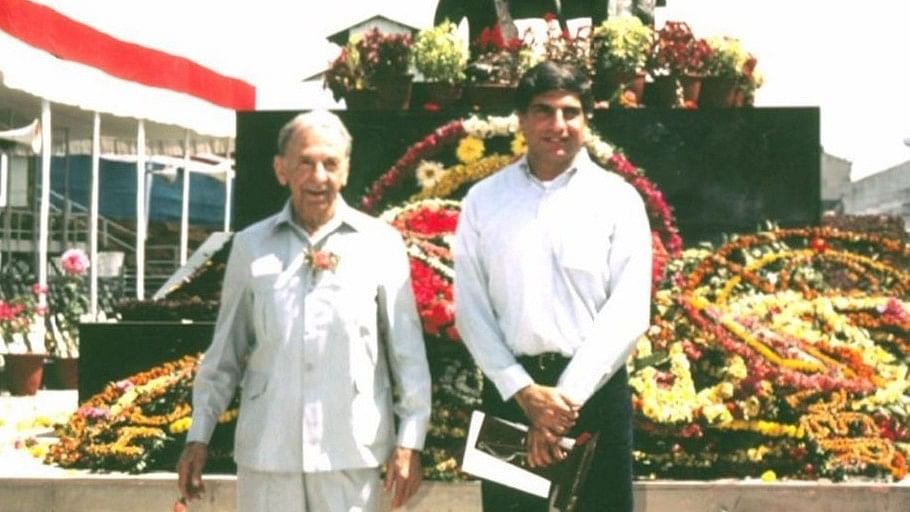
Ratan Tata with JRD Tata in Jamshedpur.
Credit: Instagram/@ratantata
Ranchi: The city of Jamshedpur, popularly known as 'Tatanagar', is mourning. And so is Jharkhand where a day's mourning was declared on Thursday in a mark of respect for industrialist Ratan Tata.
Named after Tata Group's founding father Jamsetji Nusserwanji Tata, it was the timeless vision of Ratan Tata that propelled Jamshedpur's growth and put it on the global map. His contributions are considered significant towards shaping Jharkhand, a backward region that became a state in 2000.
He first visited Jamshedpur in 1963 to look into how Tata Steel, now a global conglomerate, works. He then visited the city in 1965 to hone his pilot skills.
As soon as the news of his demise spread, a pall of gloom descended on the city. Since the morning, people from different walks of life have been visiting the Tata Centre to pay their homage to the legend who died at a Mumbai hospital on Wednesday night at the age of 86.
Ratan Tata, who became the chairman of Tata Steel in 1993, visited the city regularly.
During the years he was active, never did he give a miss to the Founder's Day function, held on March 3 to mark the birth anniversary of Jamsetji Nusserwanji Tata. He also came here to attend various company events, including the inauguration of blast furnaces, and social gatherings.
His second last visit to Jamshedpur was in 2019 when the Meherbai Tata Memorial Hospital (MTMH) was upgraded.
"I have a great sense of pride in what we have inaugurated today. It serves The Tata Trusts dream of contributing a grid of Cancer hospitals so that lives may be saved. The new facility is a wonderful new extension and we look forward to the contribution it would make to mankind," he had said.
The city-based Singhbhum Chamber of Commerce and Industry recalled his address in 2012.
He had said that traditionally a conservative business conglomerate, the Tatas have changed after the economic reforms in 1991, acquiring global brands and performing better than peers.
"We were too conservative about the liberalisation but tried to change when the market was opened in 1991... We, however, did better compared to other companies in the open market," he had said.
His last visit to Jharkhand was during the 182nd Founder's Day celebrations in March 2021.
During that visit, he had inaugurated the academy building of Naval Tata Hockey Academy, GraphITI Centre - one of the world's largest single-site graphene production units with a capacity of 100 ton per annum -- at the Indian Steel and Wire Products Limited, and Tata Steel Gateway Structure.
It is Tata Steel that developed the country's first industrial city at Jamshedpur, which was a part of undivided Bihar.
The British were initially sceptical about the success of this enterprise, but the plant went on to become the principal supplier of steel and armoured vehicles to the Allied forces during World War I.
The British rewarded the Tata family by renaming Sakchi as Jamshedpur to honour the late Jamsetji.
Demanding Bharat Ratna, Tata Group Workers Union president Rakeshwar Pandey said, "After JRD Tata it was Ratan Tata who has given his heart and soul for Jamshedpur and Tata workers."